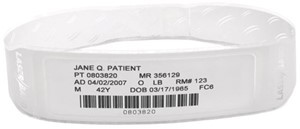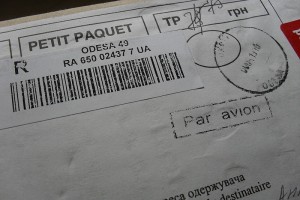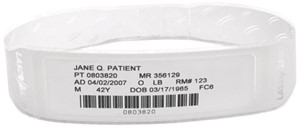Barcodes such as the UPC have become a ubiquitous element of modern civilization, as evidenced by their enthusiastic adoption by stores around the world; almost every item other than fresh produce from a grocery store, department store, and mass merchandiser has a UPC barcode on it. This helps track items and also reduces instances of shoplifting involving price tag swapping, although shoplifters can now print their own barcodes including 1D & 2D barcodes. In addition, retail chain membership cards (issued mostly by grocery stores and specialty “big box” retail stores such as sporting equipment, office supply, or pet stores) use bar codes to uniquely identify consumers, allowing for customized marketing and greater understanding of individual consumer shopping patterns. At the point of sale, shoppers can get product discounts or special marketing offers through the address or e-mail address provided at registration.
and specialty “big box” retail stores such as sporting equipment, office supply, or pet stores) use bar codes to uniquely identify consumers, allowing for customized marketing and greater understanding of individual consumer shopping patterns. At the point of sale, shoppers can get product discounts or special marketing offers through the address or e-mail address provided at registration.
Barcodes can allow for the organization of large amounts of data. They are widely used in the healthcare and hospital settings, ranging from patient identification (to access patient data, including medical history, drug allergies, etc.) to medication management. They are also used to facilitate the separation and indexing of documents that have been imaged in batch scanning applications, track the organization of species in biology,[13] and integrate with in-motion check weighs to identify the item being weighed in a conveyor line for data collection.
They can also be used to keep track of objects and people; they are used to keep track of rental cars, airline luggage, nuclear waste, registered mail, express mail and parcels. Barcoded tickets allow the holder to enter sports arenas, cinemas, theatres, fairgrounds, and transportation, and are used to record the arrival and departure of vehicles from rental facilities etc. This can allow proprietors to identify duplicate or fraudulent tickets more easily. Barcodes are widely used in shop floor control applications software where employees can scan work orders and track the time spent on a job.
to keep track of rental cars, airline luggage, nuclear waste, registered mail, express mail and parcels. Barcoded tickets allow the holder to enter sports arenas, cinemas, theatres, fairgrounds, and transportation, and are used to record the arrival and departure of vehicles from rental facilities etc. This can allow proprietors to identify duplicate or fraudulent tickets more easily. Barcodes are widely used in shop floor control applications software where employees can scan work orders and track the time spent on a job.
Barcodes are also used in some kinds of non-contact 1D and 2D position sensors. A series of barcodes are used in some kinds of absolute 1D linear encoder. The barcodes are packed close enough together that the reader always has one or two barcodes in its field of view. The relative position of the barcode in the field of view of the reader gives incremental precise positioning, in some cases with sub-pixel resolution. The data decoded from the barcode gives the absolute coarse position. An “address carpet”, such as Howell’s binary pattern and the Anoto dot pattern are 2D barcodes designed so that a reader, even though only a tiny portion of the complete carpet is in the field of view of the reader, can find its absolute X,Y position and rotation in the carpet.
Some 2D barcodes embed a hyperlink to a web page. A capable cellphone might be used to read the pattern and browse the linked website, which can help a shopper find the best price for an item in the vicinity. Since 2005, airlines use an IATA-standard 2D barcode on boarding passes (BCBP), and since 2008 2D barcodes sent to mobile phones enable electronic boarding passes.
Some applications for barcodes have fallen out of use; In the 1970s and 1980s, software source code was occasionally encoded in a barcode and printed on paper (Cauzin Softstrip and Paperbyte are barcode symbologies specifically designed for this application), and the 1991 Barcode Battler computer game system used any standard barcode to generate combat statistics.
In the 21st century, many artists have started using barcodes in art, such as Scott Blake’s Barcode Jesus, as part of the post-modernism movement.
Scanners (barcode readers)
The earliest, and still the cheapest, barcode scanners are built from a fixed light and a single photosensor that is manually “scrubbed” across the barcode. Barcode scanners can be classified into three categories based on their connection to the computer. The older type is the RS-232 barcode scanner. This type requires special programming for transferring the input data to the application program.
“Keyboard interface scanners” connect to a computer using a PS/2 or AT keyboard–compatible adaptor cable (a “keyboard wedge”). The barcode’s data is sent to the computer as if it had been typed on the keyboard.
Like the keyboard interface scanner, USB scanners are easy to install and do not need custom code for transferring input data to the application program. On PCs running windows the HID interface emulates the data merging action of a hardware “keyboard wedge”, and the scanner automatically behaves like an additional keyboard.
Barcode scanners can be used in Google’s mobile Android operating system via both their own Google Goggles application or 3rd party barcode scanners like Scan. Nokia’s Symbian operating system features a barcode scanner, while mbarcode is a QR code reader for the Maemo operating system. In the Apple iOS, a barcode reader is not natively included but more than fifty paid and free apps are available with both scanning capabilities and hard-linking to URI. With BlackBerry devices, the App World application can natively scan barcodes and load any recognized Web URLs on the device’s Web browser. Windows Phone 7.5 is able to scan barcodes through the Bing search app.
Quality Control & Verification
Barcode verification examines scanability and the quality of the barcode in comparison to industry standards and specifications. Barcode verifiers are primarily used by businesses that print and use barcodes. Any trading partner in the supply chain can test barcode quality. It is important to verify a barcode to ensure that any reader in the supply chain can successfully interpret a bar code with a low error rate. Retailers levy large penalties for non-compliant barcodes. These chargebacks can reduce a manufacturer’s revenue by 2% to 10%.
A barcode verifier works the way a reader does, but instead of simply decoding a barcode, a verifier performs a series of tests. For linear barcodes these tests are:
- Edge Determination
- Minimum Reflectance
- Symbol Contrast
- Minimum Edge Contrast
- Modulation
- Defects
- Decode
- Decodability
- 2D barcodes matrix symbols look at the parameters:
- Symbol Contrast
- Modulation
- Decode
- Unused Error Correction
- Fixed (finder) Pattern Damage
- Grid Non-uniformity
- Axial Non-uniformity
Depending on the parameter, each ANSI test is graded from 0.0 to 4.0 (F to A), or given a pass or fail mark. Each grade is determined by analyzing the scan reflectance profile (SRP), an analog graph of a single scan line across the entire symbol. The lowest of the 8 grades is the scan grade and the overall ISO symbol grade is the average of the individual scan grades. For most applications a 2.5 (C) is the minimum acceptable symbol grade.
Compared with a reader, a verifier measures a barcode’s optical characteristics to international and industry standards. The measurement must be repeatable and consistent. Doing so requires constant conditions such as distance, illumination angle, sensor angle and verifier aperture. Based on the verification results, the production process can be adjusted to print higher quality barcodes that will scan down the supply chain.
Barcode verifier standards
Barcode verifiers should comply with the ISO/IEC 15426-1 (linear) or ISO/IEC 15426-2 (2D). This standard defines the measuring accuracy of a bar code verifier. The current international barcode quality specification is ISO/IEC 15416 (linear) and ISO/IEC 15415 (2D). The European Standard EN 1635 has been withdrawn and replaced by ISO/IEC 15416. The original U.S. barcode quality specification was ANSI X3.182. (UPCs used in the US – ANSI/UCC5).
This standard defines the quality requirements for barcodes and Matrix Codes (also called Optical Codes). As of 2011 the ISO workgroup JTC1 SC31 was developing a Direct Part Marking (DPM) quality standard: ISO/IEC TR 29158. International standards are available from the International Organization for Standardization (ISO). These standards are also available from local/national standardization organizations, such as ANSI, BSI, DIN, NEN and others.
Click the link to read our final article in the barcode series.




